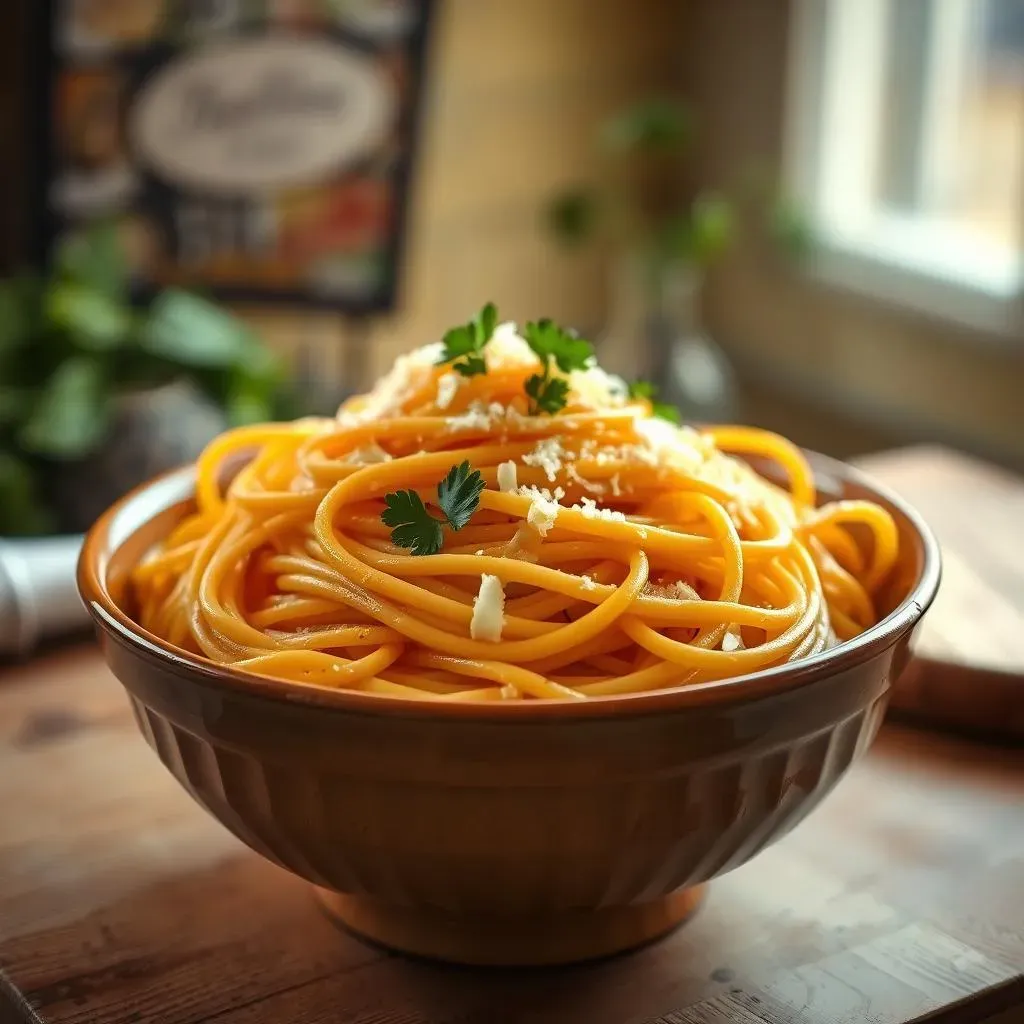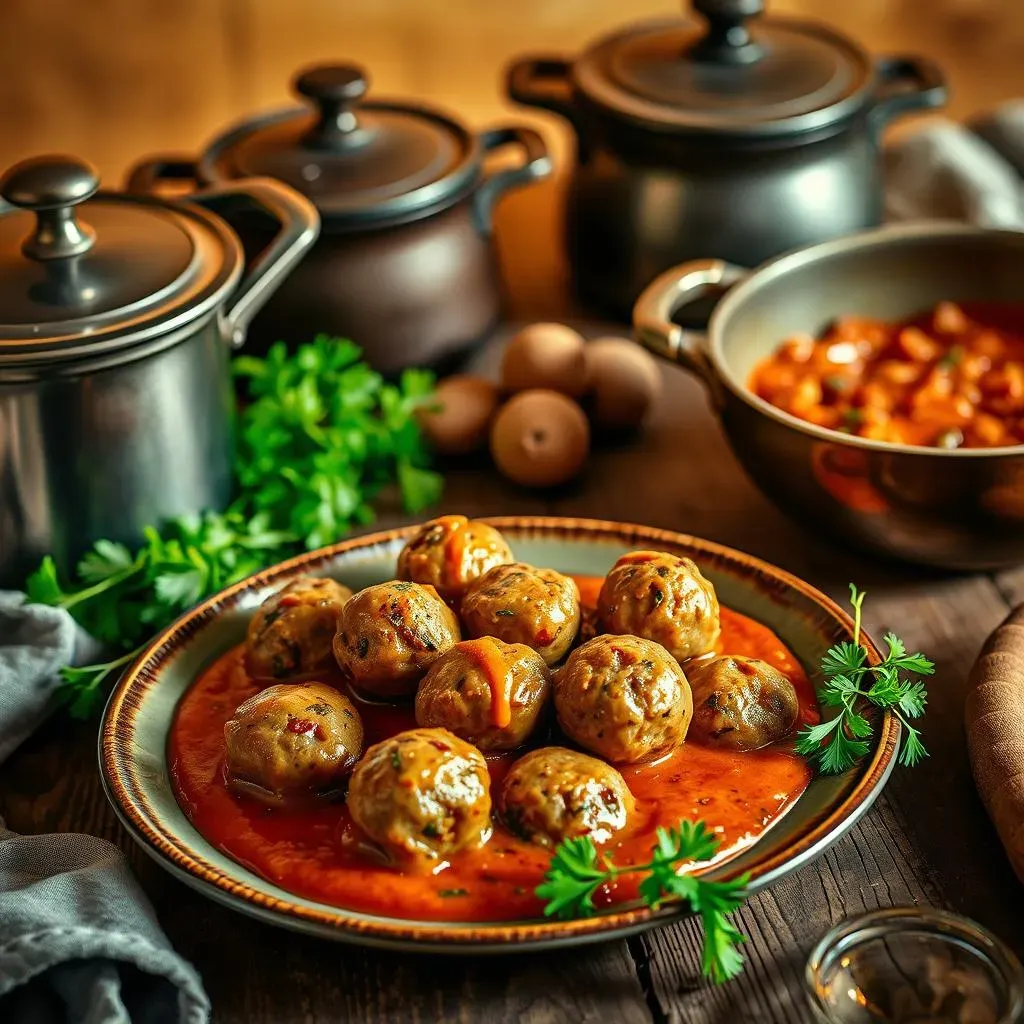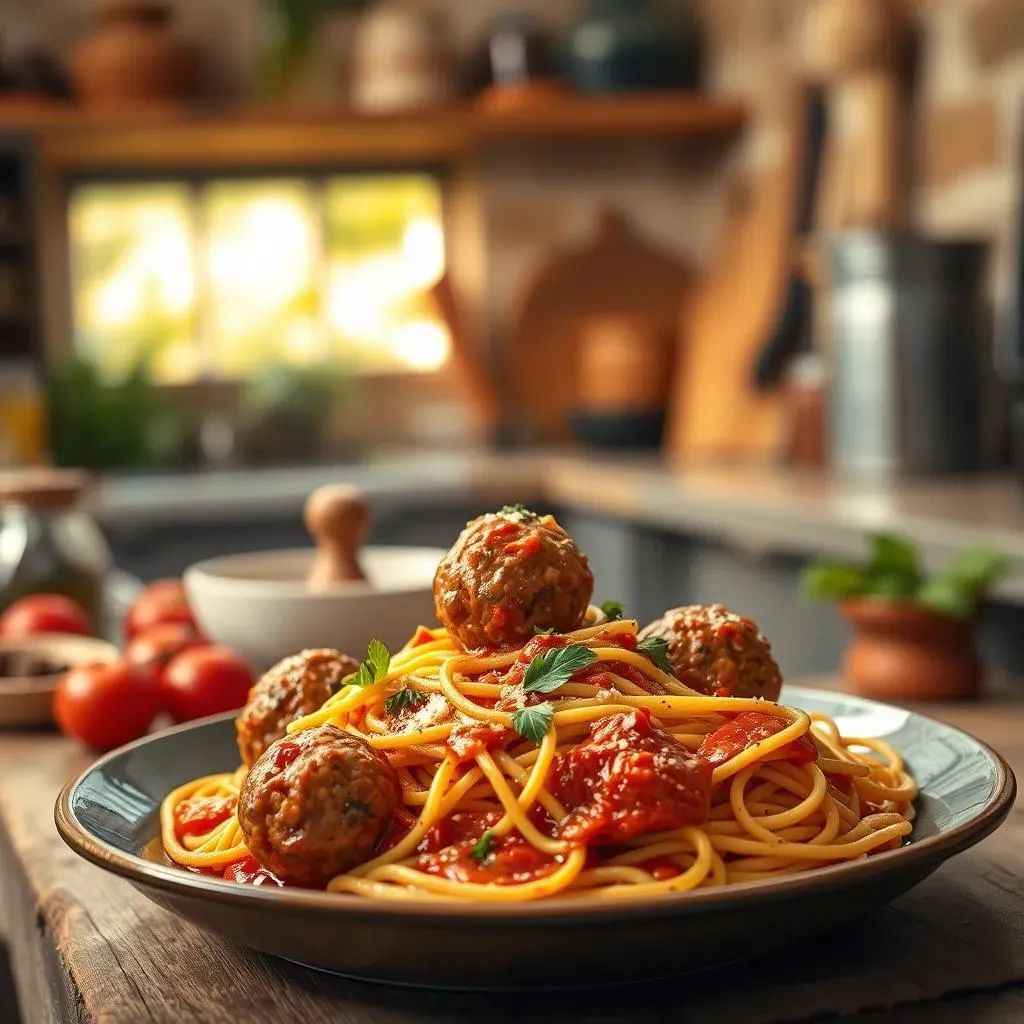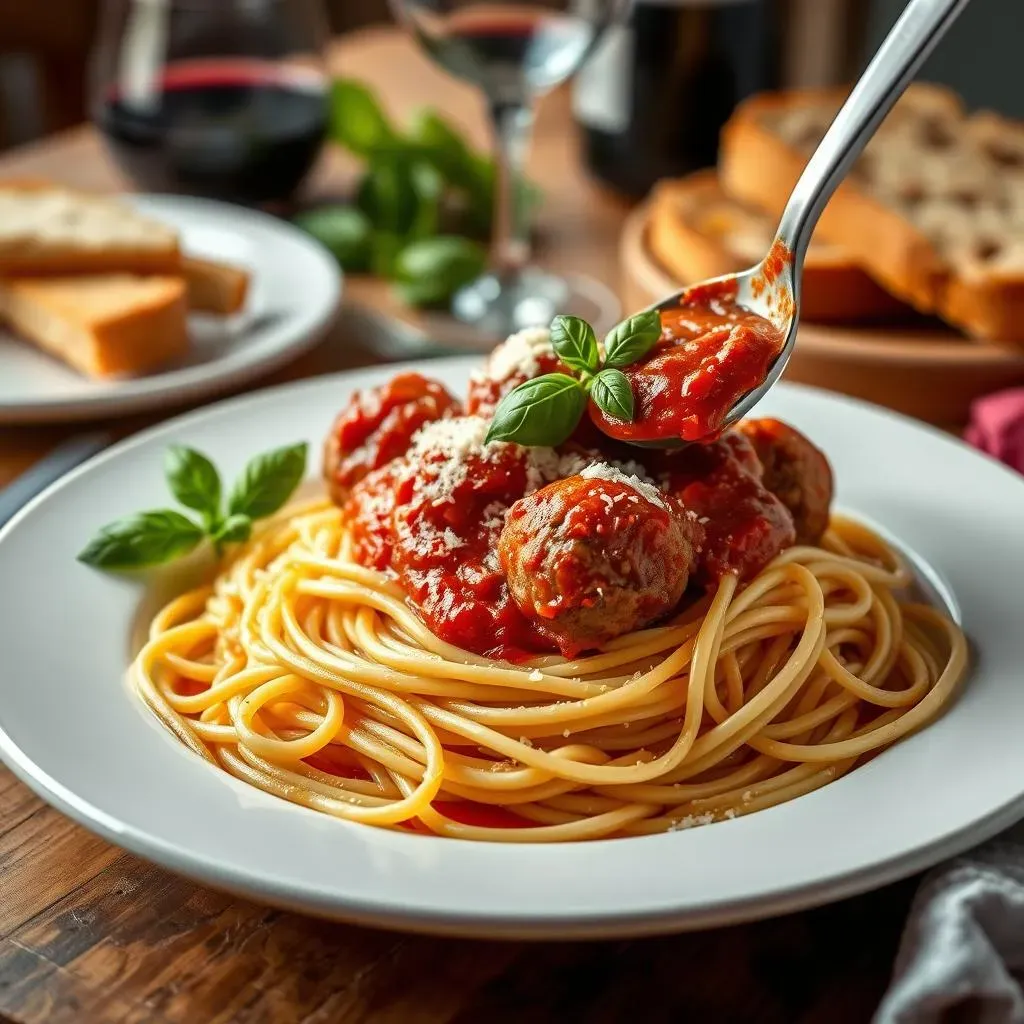Who doesn't love a big plate of spaghetti and meatballs? It's the ultimate comfort food, a dish that brings back memories of family dinners and cozy nights in. But let's be honest, not all spaghetti and meatballs are created equal. Some are bland, some are dry, and some just don't have that homemade touch. If you're tired of settling for mediocre, then you've come to the right place. This guide will walk you through creating the best homemade spaghetti and meatball recipe you've ever tasted, from selecting the perfect pasta to simmering your meatballs in a rich, flavorful sauce.
Perfecting Your Spaghetti: Choosing the Right Pasta and Cooking It Just Right

Perfecting Your Spaghetti: Choosing the Right Pasta and Cooking It Just Right
The Quest for the Perfect Noodle
let's talk spaghetti. It's not just any noodle; it's the foundation of our masterpiece. The type of spaghetti you choose can dramatically impact the final dish. Do you go for a classic, thin spaghetti, or something a little thicker like spaghetti alla chitarra? Maybe even a whole wheat option for a nuttier flavor? Personally, I lean towards a good quality semolina spaghetti. It's sturdy enough to hold up to a hearty meat sauce, but still delicate enough to twirl around your fork with ease.
But here's the thing: don't just grab the cheapest box on the shelf. Splurge a little! A higher-quality pasta will have a better texture and flavor, making a world of difference. Look for bronze-die cut pasta. This process creates a rougher surface on the noodle, which helps the sauce cling better. Trust me, it's worth the extra couple of bucks.
Cooking Spaghetti Like a Pro: Al Dente or Bust!
Now, for the cooking. This is where so many people go wrong. Soggy spaghetti is a crime against humanity! The key is "al dente," which means "to the tooth" in Italian. You want the pasta to be firm and slightly resistant when you bite into it.
Here's my foolproof method: Use a large pot with plenty of salted boiling water. Seriously, don't skimp on the salt. It seasons the pasta from the inside out. Add the spaghetti and cook according to the package directions, but start checking for doneness a minute or two early. Fish out a noodle, let it cool slightly, and give it a bite. If it's still too firm, cook for another minute and check again.
Once it's perfectly al dente, drain the spaghetti immediately. Don't rinse it unless you're making a cold pasta salad. Rinsing washes away the starches that help the sauce adhere.
Tips and Tricks for Spaghetti Perfection
Want to take your spaghetti game to the next level? Here are a few extra tips:
- Save some pasta water: Before you drain the spaghetti, reserve about a cup of the starchy cooking water. You can add this to your sauce to help it thicken and cling to the pasta.
- Cook it all at once: Add all of the spaghetti to the pot at the same time instead of waiting for it to soften.
- Don't overcook: There’s no saving overcooked spaghetti. Start checking for doneness a couple of minutes before the package directions.
Experiment with different types of spaghetti to find your favorite. Don't be afraid to try new things. Cooking should be fun.
Crafting the Ultimate Meatballs: Ingredients, Mixing, and Cooking Techniques

Crafting the Ultimate Meatballs: Ingredients, Mixing, and Cooking Techniques
The Meat of the Matter: Choosing Your Ground Meat
Alright, let's dive into the heart of the dish: the meatballs! The type of ground meat you choose is crucial. While you can use all beef, I find that a blend of ground beef, pork, and veal creates the most flavorful and tender meatballs. The beef provides that classic meaty flavor, the pork adds richness and moisture, and the veal contributes to a delicate texture. Aim for a ratio of roughly 1/3 of each.
When selecting your ground meat, don't be afraid to ask your butcher for recommendations. And remember, fat is your friend! A little bit of fat keeps the meatballs moist and prevents them from drying out during cooking. Look for ground meat with a fat content of around 15-20%.
Binding it All Together: The Secret to Tender Meatballs
Now, let's talk about the other essential ingredients. Breadcrumbs are a must for binding the meatballs together and keeping them light and airy. I prefer using fresh breadcrumbs made from a crusty Italian loaf. Simply pulse the bread in a food processor until you have coarse crumbs. You can also use dried breadcrumbs, but be sure to soak them in milk or water before adding them to the meat mixture. This will help prevent the meatballs from becoming dry.
Eggs are another important binder, helping to hold everything together. And don't forget the flavor boosters! Garlic, parsley, Parmesan cheese, salt, and pepper are all essential for creating meatballs that are bursting with flavor. Feel free to experiment with other herbs and spices, such as oregano, basil, or red pepper flakes, to customize the flavor to your liking.
Homemade Sauce Secrets: Building Flavor from Simple Ingredients for Your Spaghetti and Meatballs

Homemade Sauce Secrets: Building Flavor from Simple Ingredients for Your Spaghetti and Meatballs
The Tomato Base: Choosing Wisely
let's talk sauce. You can't have the best homemade spaghetti and meatballs without a killer sauce, right? And the secret? It starts with the tomatoes. Seriously, the quality of your tomatoes will make or break your sauce. I'm a purist, so I always opt for San Marzano tomatoes. They're a bit more expensive, but their naturally sweet flavor and low acidity are unmatched.
You've got options here: whole peeled, crushed, or even tomato puree. For a rustic sauce, go for whole peeled and crush them by hand. If you're short on time, crushed tomatoes work just fine. Just steer clear of those overly processed tomato sauces loaded with sugar and preservatives. We're going for homemade here, remember?
Building Flavor: The Aromatic Foundation
Now, let's build some flavor! This is where the magic happens. Start by sautéing some finely chopped onions and garlic in olive oil over medium heat. Cook them until they're softened and fragrant, but be careful not to burn the garlic. Burnt garlic will ruin your entire sauce.
Once the onions and garlic are ready, add a pinch of red pepper flakes for a little kick, and then toss in some dried oregano and basil. Let the spices bloom in the hot oil for a minute or so, releasing their aroma. This step is crucial for building depth of flavor.
Next, deglaze the pot with a splash of dry red wine. This will add another layer of complexity to the sauce. Let the wine simmer for a few minutes, scraping up any browned bits from the bottom of the pot. Those browned bits are packed with flavor!
Simmering to Perfection: Time and Patience
Now, it's time to add the tomatoes! Pour in your crushed or hand-crushed San Marzano tomatoes, along with a pinch of salt and a grind of black pepper. Bring the sauce to a simmer, then reduce the heat to low, cover the pot, and let it simmer for at least an hour, or even longer if you have the time.
The longer the sauce simmers, the more the flavors will meld together and deepen. Stir it occasionally to prevent it from sticking to the bottom of the pot. And don't be afraid to taste and adjust the seasonings as needed.
- Add a bay leaf: Toss in a bay leaf while the sauce simmers for an extra layer of flavor. Just remember to remove it before serving.
- Sweeten it up (naturally): If your sauce is too acidic, add a pinch of sugar or a grated carrot to balance the flavors.
- Don't rush it: Patience is key to a great sauce. The longer it simmers, the better it will taste.
Once the sauce has simmered to your liking, it's time to add the meatballs! Gently nestle them into the sauce and let them simmer for another 30 minutes or so, until they're heated through and infused with the flavor of the sauce.
Assembling and Serving: Plating, Garnishing, and Pairing Your Best Homemade Spaghetti and Meatball Recipe

Assembling and Serving: Plating, Garnishing, and Pairing Your Best Homemade Spaghetti and Meatball Recipe
The Art of Plating: Presentation Matters
you've got this amazing spaghetti and meatball recipe, now it's time to plate it up. Presentation is key! I always say, we eat with our eyes first. A sloppy pile of spaghetti just isn't going to cut it after all the effort you've put in.
Start by twirling a generous portion of spaghetti onto a plate. Use tongs or a large fork to create a neat little nest. Then, gently arrange a few meatballs on top of the spaghetti. Don't overcrowd the plate; you want to be able to see each element. Ladle a generous amount of sauce over the spaghetti and meatballs, making sure everything is nicely coated.
Garnishing and Pairing: The Finishing Touches
Now for the fun part: garnishing! A sprinkle of freshly grated Parmesan cheese is a must. It adds a salty, savory note that complements the richness of the sauce and meatballs. I also like to add a chiffonade of fresh basil or parsley for a pop of color and freshness.
As for pairings, a simple side salad with a light vinaigrette is a great way to balance out the richness of the dish. And don't forget the garlic bread! Crusty garlic bread is perfect for soaking up all that delicious sauce. To drink, a dry red wine, like a Chianti or a Sangiovese, pairs beautifully with spaghetti and meatballs.
Here's a quick guide to elevate your spaghetti and meatball experience:
- Cheese: Freshly grated Parmesan or Pecorino Romano
- Herbs: Chopped fresh basil, parsley, or oregano
- Bread: Garlic bread, toasted baguette, or focaccia
- Salad: Simple green salad with vinaigrette
- Wine: Chianti, Sangiovese, or other dry red wine
Your Best Homemade Spaghetti and Meatball Recipe Awaits
So there you have it – everything you need to create the best homemade spaghetti and meatball recipe. From selecting the right pasta and crafting tender, flavorful meatballs to simmering them in a rich, homemade sauce, you're now equipped to make a dish that rivals your favorite Italian restaurant. Don't be afraid to experiment with the recipe, adding your own personal touches to make it truly your own. Gather your ingredients, invite your loved ones, and get ready to enjoy a comforting and satisfying meal that will leave everyone asking for seconds. Happy cooking!